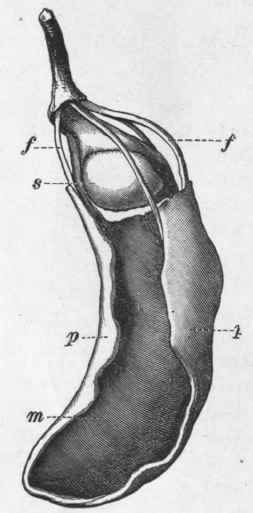Tamarinds (Tamarindus, Fructus Tamarindi)
Description
This section is from the book "A Text Book Of Materia Medica, Being An Account Of The More Important Crude Drugs Of Vegetable And Animal Origin", by Henry G. Greenish. Also available from Amazon: A Text Book of Materia Medica : Being an Account of the More Important Crude Drugs of Vegetable and Animal Origin.
Tamarinds (Tamarindus, Fructus Tamarindi)
Source, Etc
The tamarind tree, Tamarindus indica, Linne (N.O. Leguminosoe), a large and handsome tree indigenous to tropical Africa is, cultivated throughout India and the West Indies, where it forms a valuable article of diet. The Arabian name of the fruit (Tamare Hindi, or Indian date) would indicate that the Arabians became acquainted with it from the Hindus, and probably introduced it into Europe.
The tree produces an erect raceme of flowers succeeded by inde-hiscent legumes from 5 to 20 cm. in length. The epicarp of the legumes is rough, brownish, firm, but easily broken and separated from the pulp; the latter (mesocarp) is juicy and acid, and traversed by a number of stout branching fibrovascular bundles. The seeds are few in number and enclosed in a leathery membrane (endocarp). In the West Indies tamarinds, exported from Barbados and Antigua, are collected when ripe, and prepared for the market by removing the epicarp, packing them in barrels, and preserving them with hot syrup. In India the pulp is simply pressed into cakes, with or without the addition of 10 per cent, of salt as a preservative. Small quantities of tamarinds are also exported from other countries (Egypt, &c).
Description
The official tamarinds are the fruits preserved with syrup, as above described. They form a reddish brown, moist, sugary mass, in which the branching fibres and hard, reddish brown, obscurely quadrangular seeds enclosed in the leathery endocarp can readily be found. They have an agreeable odour and a sweet and acid taste.
From India tamarinds are sent in the form of firm, black cakes consisting of the pulp of the fruit, together with the fibres, seeds, and small portions of the epicarp. Although not official it is frequently employed, and yields a good pulp. The cakes have scarcely any odour, but a rather strongly acid taste.
Constituents
Tamarind pulp, though varying in composition, contains about 10 per cent, of free tartaric acid, about 8 per cent, of acid potassium tartrate, and from 25 to 40 per cent, of invert sugar. The total acidity varies from 11 to 16 per cent. West Indian tamarinds contain much added sugar and proportionately less acid.
Uses
Tamarinds are a pleasant acid refrigerant and gentle laxative.

Fig. 56. - Fruit of the Tamarind tree with part of the pericarp removed, showing 5, seed; /, fibres; p, epicarp; m, pulp. Natural size. (Vogl).
Continue to:


